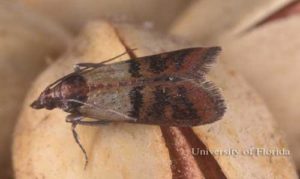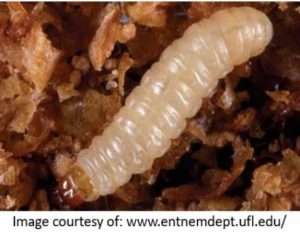Introduction to Defect Action Levels
 Like many things, food is not perfect. There are a certain number of defects allowable in food, this allowable quantity is known as a defect action level. Defect action level means a level of a non-hazardous, naturally occurring, unavoidable defect at which FDA may regard a food product adulterated and subject to enforcement action under section 402(3) of the Federal Food, Drug, and Cosmetic Act. It can be insect fragments, sticks, stones, burlap bagging, mildew, certain molds, and machinery lubricants. Regardless of the defect in these scenarios, there is no inherent hazard to health.
Like many things, food is not perfect. There are a certain number of defects allowable in food, this allowable quantity is known as a defect action level. Defect action level means a level of a non-hazardous, naturally occurring, unavoidable defect at which FDA may regard a food product adulterated and subject to enforcement action under section 402(3) of the Federal Food, Drug, and Cosmetic Act. It can be insect fragments, sticks, stones, burlap bagging, mildew, certain molds, and machinery lubricants. Regardless of the defect in these scenarios, there is no inherent hazard to health.
The FDA set these action levels because it is economically impractical to grow, harvest, or process raw products that are totally free of non-hazardous, naturally occurring, unavoidable defects. Products harmful to consumers are subject to regulatory action whether or not they exceed the action levels.
Examples can include:
• An average of 30 or more insect fragments per 100 grams of peanut butter.
• Average of mold count is 12% or more in apple Butter.
• 10% by count of spears or pieces are infested with 6 or more attached asparagus beetle eggs and/or sacs in Canned or Frozen Asparagus.
• An average of 11 or more rodent hairs per 50 grams in ground cinnamon.
• An average of 1 or more whole insects (or equivalent) per 50 grams in cornmeal.Submitted by: Rich Gibson ACE, CFSQA
The Indian Meal Moth

Order: Lepidoptera Family: Pyralidae Genus: Plodia Species: P. interpunctella
The Indian Meal Moth is one of the most common stored product pests encountered in commercial food handling establishments. With the adults measuring about half an inch long with a wingspan of about 5/8 inch (16 to 20 mm). The forewings of this moth are reddish brown with a copper sheen on the outer two thirds and gray on the inner third. While the presence of flying adults is an indicator of infestation, the larvae are very destructive to foods, raw materials, and, in some cases, packaging.
The life cycle of this stored product pest can be completed in 27 to 305 days. A single female can lay up to 400 eggs after mating. The mating and laying of eggs occur about three days after adult emergence. The eggs can be laid singly or in clusters and are generally oviposited directly on the larval food source. The Indian Meal Moth is found on every continent, excluding Antarctica. Within the United States, the moth is most found in Florida, where it thrives in the tropical habitat.
There are various methods for controlling this destructive pest. The first step is to find the infested materials and remove them. Cleaning and sanitation serve as the front-line defense. Removing foodstuffs associated with the pest reduces the likelihood of infestation while stock rotation reduces the risk of eggs hatching and larvae pupating. Freezing and heating are effective, non-chemical controls methods. While there are many chemical control methods available from space treatments to crack and crevice applications, a long-term method for control is mating disruption. The use of a non-toxic synthetic replica of the female-produced sex pheromone to suppress, deny, or delay the mating cycle.
Submitted by: Rich Gibson, ACE, CFSQA
Moths in the Offices

A mid-size bakery contacted RK Environmental Services (RKE) to let the team know they were seeing “some kind of moths” fluttering around their offices. The client assured RKE they did not have any food or products stored in the upstairs office and could not understand why they are seeing moths.
Upon initial inspection, the RKE team found the carpets leading into the offices were caked with flour at the three entrances. The caked flour originated from personnel entering the offices from the production areas. There were six to ten feet of product dust leading into the offices. Upon closer inspection, the team found a few Indian Meal Moth larvae along the baseboards adjacent to the entry doors. The team applied a residual insecticide labeled for the moth to the baseboards and performed a space treatment of the offices to “knock down” the flying adult moths.
Through the inspection and treatment process it was determined that employees were most likely tracking the insect’s eggs into the offices via footwear encrusted with product dusts and embedding the eggs in the carpets and allowing the eggs to hatch.
The client hired a carpet cleaning company to deep clean all the carpets in the offices and the uniform contract service provider added rugs to the high traffic area so they could be replaced and cleaned on a weekly basis. This allowed any lifecycles to be broken.
After a few weeks the residual dust was no longer evident and no additional sightings were reported.
- Take Away Tips:
• The source of a pest problem may not be clear.
• Preventative action is more important than corrective action.
• Sanitation and cleaning are the first lines of defense against stored product pests.






